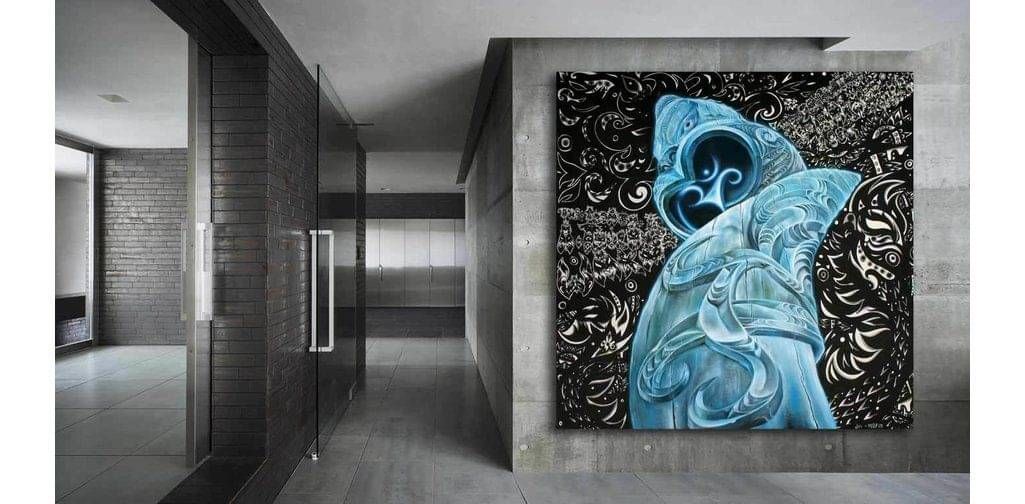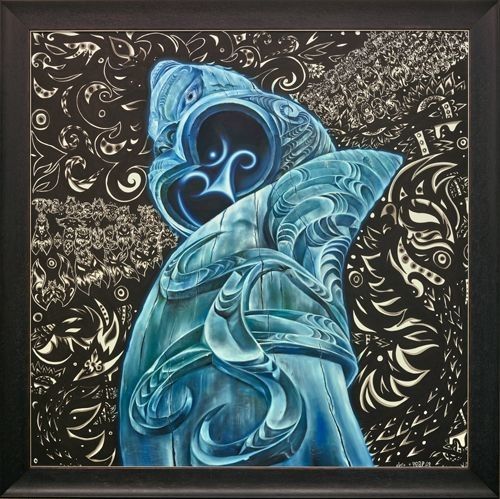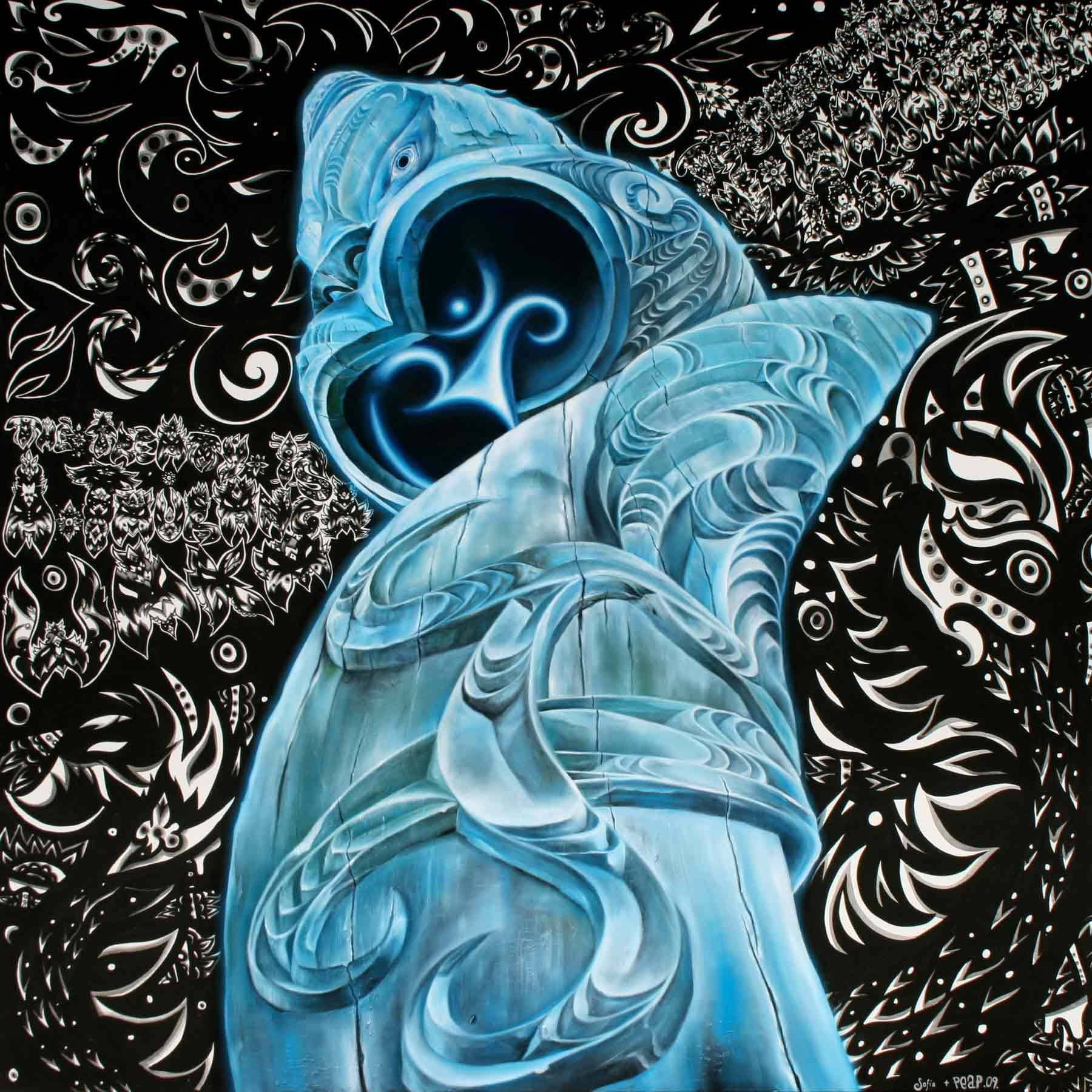Te Pou Tuatahi
Original painting by Sofia Minson and Samapeap Tarr
Oil, acrylic and flashe (ink) on canvas. 1850 x 1850mm.
SOLD

The waka of Ngati Porou ancestors
The creation of this collaborative painting by Sofia Minson and Samapeap Tarr, a graffiti artist of Cambodian and New Zealand heritage, was filmed for the documentary 'Canvassing the Treaty.' The thought provoking art and social experiment follows six New Zealand artists, three Maori and three non-Maori, as they gain deeper insights into the Treaty of Waitangi and create cross-cultural collaborative artworks during one weekend at Te Tii marae in Northland.
Painted during one weekend at Te Tii Marae
Sofia's oil painting of the central blue carved 'pou' in this artwork represents her Ngati Porou ancestors' waka. The Sanscrit symbol for Om, which is the sound of the universe, is spoken to us from the mouth of the ancestral figure. Surrounding the painting are Peap's black ink designs influenced by Cambodian legends of the Naga snake. Within his patterning are the words "The Treaty is a Tauranga Waka", which means that the Treaty is New Zealand's first immigration document.

Pou Symbolizing Ngati Porou Waka
The subject of Te Pou Tuatahi is an exaggerated representation of a pou (carved post) symbolizing the Ngati Porou waka 'Horouta'. The pou of Horouta stands in a line up of ten poupou at the grounds at Te Tii and together they represent the great waka traditions linking Aotearoa with the Pacific. Sofia found the link between the idea of waka and Te Tiriti o Waitangi very interesting.
Te Tiriti is effectively the first legal immigration document, which affirms the position of various iwi as absolute sovereign states, and welcomes the crown to become its own iwi and to govern its own people migrating to Aotearoa. In essence it is a 'tauranga waka' or a landing place, a vessel to pull people in. This land and this world is meant to be shared and therefore the pou in Te Pou Tuatahi is a waka of inclusiveness, not exclusiveness.
Ancestral Consciousness
On another level, Sofia sees the pou as being our ancestors speaking to us with the consciousness of the next world. The mouth is wide and is a void of blackness, within that blackness is the Sanskrit symbol Aum. Our ancestors are giving us the profound and unifying message of Aum, which is literally the resonating sound of the universe.
"The whole world has evolved from Aum The whole world is sustained by Aum The whole world will merge into Aum"
- Sivayave
Guru Sri Chinmoy said that the role of consciousness is to deepen silence and to expand sound. In his Colour Kingdom book the colour turquoise is connected with the idea of consciousness. The turquoise light glowing from the carved figure in the painting signifies the embodiment of a higher consciousness.


Eye of a humpback whale
The figure's eye in the painting is the eye of a humpback whale. Whales are believed to have mass consciousness, not individual consciousnesses like man does. That means, if something happens to one whale, it is somehow known to the rest. Some believe the deeply peaceful presence emanating from whales, which is palpable to divers fortunate enough to experience close contact, as well as the sacrifice that whales make in beaching themselves, are in order to raise the vibration and compassion of humankind. The figure in the painting has essentially the same role as the humpback whale, as guardian of man.

